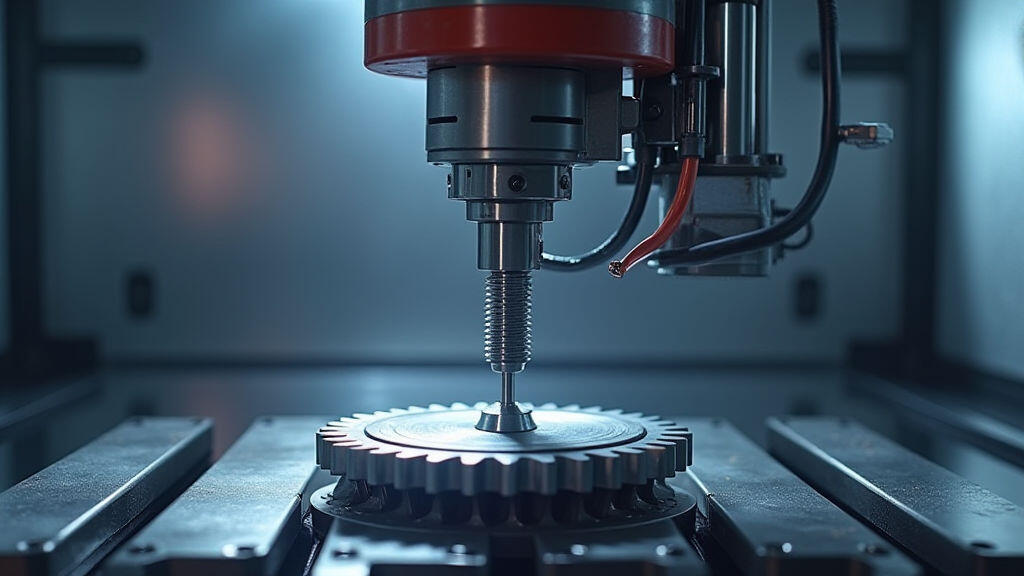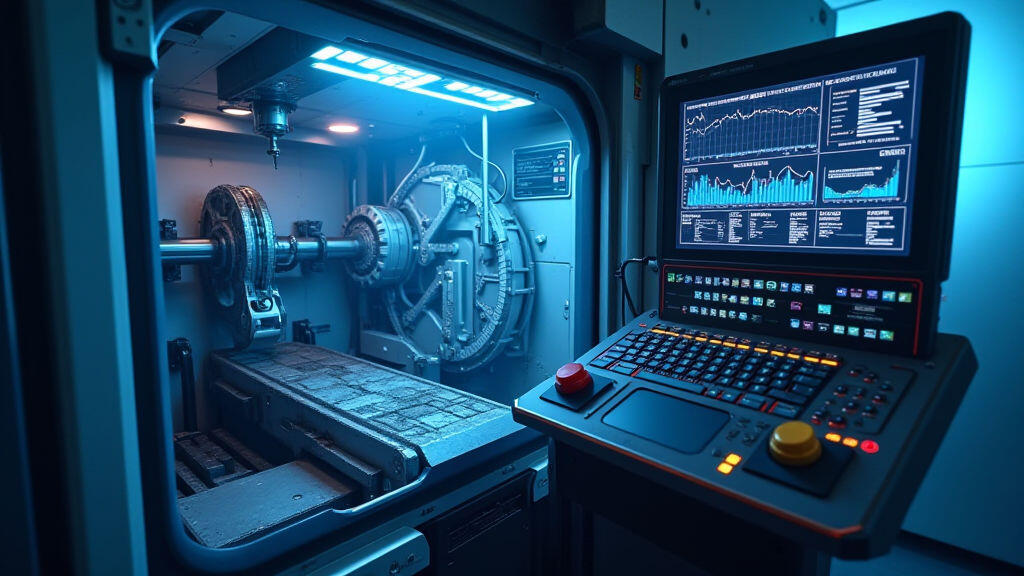Modern manufacturing relies heavily on Computer Numerical Control (CNC) machine tools, from high‑precision mills to automated drilling centers. Central to a CNC machine’s performance is its drive system, and within that, the gear motor. Even though the gear motor might seem like a simple component, selecting the right one can make the difference between smooth operation and costly downtime. This article walks through the fundamentals of gear motors, the criteria for choosing them, real‑world application examples, maintenance best practices, and emerging trends that will shape the future of CNC drive technology.

1. What Is a Gear Motor, and Why Does It Matter?
A gear motor is an electric motor equipped with a built‑in gear train, which translates high‑speed, low‑torque output from the motor into lower speed but higher torque suitable for driving CNC spindles or linear stages. This compact, high‑performance design eliminates the need for an external transmission and simplifies the control architecture.
Key advantages of gear motors include:
- Compactness: The motor and gearing are housed in a single unit, saving cabinet space.
- Integrated feedback: Many gear motors provide built‑in encoders, giving precise position and speed information.
- Reduced maintenance: Fewer moving parts mean lower wear and tear compared to separate motor‑gear box assemblies.
- High efficiency: Modern gear motors achieve efficiencies above 90%, translating to less energy consumption.
Because of these traits, gear motors are especially attractive for high‑speed machining, complex tool changes, and robotic applications.
2. Selecting the Right Gear Motor: Core Criteria
Choosing a gear motor requires balancing a handful of critical factors. Below are the most influential parameters for CNC applications.
- Torque and Speed Requirements: Compute the required peak torque for the spindle or linear stage, and determine the desired angular or linear speed. Manufacturers typically provide torque curves; compare them to the maximum demand of your operation. Avoid motors that barely meet the torque spec; margins provide safety during startup, overloads, and acceleration.
- Encoder Resolution: Precision CNC machines need fine position and speed control. A higher encoder resolution (e.g., 10,000 pulses per revolution) allows tighter feedback loops. Mechanical encoders are the norm, but some modern models incorporate smart sensors inside the gear head.
- Thermal Management: Motors operating near their limits generate heat. Verify that the motor’s cooling assembly (fans, heat sinks) matches your machine’s ambient temperature and airflow. Look for thermal shutdown features that protect the motor from overheating.
- Drive Compatibility: Check the output shaft size, mounting pattern, and coupling type. Many CNC shops use standard I-beam couplings; ensure the gear motor’s interface matches your existing drivetrain.
- Reliability & Lifetime: View the life expectancy in revolutions or hours (often 300,000–1,000,000 revs). For production environments, choose a motor with a proven track record in similar applications.
- Warranty & Support: A generous warranty (3–5 years) and responsive technical support can reduce total cost of ownership. Some vendors also provide firmware updates that enhance performance or add new features.
- Cost vs. Benefit: Sometimes the expensive motor offers features (e.g., inbuilt data logging, industrial MACs) that justify the higher price. Run a cost‑benefit analysis that includes electricity savings, reduced maintenance, and improved uptime.
3. Gear Motor Selection in Action: Practical Examples
Below are three representative CNC scenarios, each illustrating how gear motor choice impacts performance.
3.1 High‑Speed 5‑Axis Milling Centre
A 5‑axis milling centre demands rapid dynamic positioning. The primary feeder requires a motor that delivers 15 Nm peak torque at 3,000 rpm, with an encoder offering 20,000 PPR. The chosen gear motor features a 0.2 mm/step resolution and a built‑in temperature probe. This setup cuts cycle times by about 12 % compared to a 3‑stage gearbox system, while keeping vibration levels low.
3.2 CNC Lathe for Precision Gear Cutting
Gear cutting requires steady spindle speed and tight torque control to meet pitch tolerances. A gear motor rated at 10 Nm torque with a 12,500 PPR encoder was selected. Its compact size allowed the lathe’s carriage to shift quickly during spiral cut passes. The motor’s reduced back‑drivability actualized smoother stopping, which minimized chatter and reduced surface roughness by 25 %.
3.3 Laser Engraving System with Magnetic Drive
In laser engagement, the X/Y gantry moves in precise increments. A gear motor with 5 Nm torque and an integrated incremental encoder was attached to the gantry’s drive shaft. The motor’s built‑in feedback loop completed a 1 m tracing path in 12 seconds—faster than the legacy system—while maintaining orientation error under 0.02 mm.
These examples attest that a well‑matched gear motor leads to better productivity metrics and lower mechanical stress.
4. Maintenance & Longevity: Keeping Your Gear Motor in Top Shape
Even though gear motors are compact, proactive care extends their lifespan and keeps CNC machines running smoothly.
- Regular Inspection: Check for gear wear, bearing condition, and shaft alignment during scheduled maintenance windows.
- Lubrication: Some gear motors come with sealed bearings; ensure the seal integrity is intact. For unsealed systems, apply manufacturer‑recommended grease during audits.
- Dew Interference: Keep the motor cabinet dry; condensation can corrode the gear teeth and electronics.
- Firmware Updates: Keep the motor’s firmware current; updates may improve motion control and error correction.
- Data Logging: Use the motor’s built‑in data logger to track temperature spikes or abnormal torque spikes, which often precede mechanical failure.
5. Future Trends: What’s Next for Gear Motors in CNC?
Technological evolution is shaping gear motors in exciting ways:
- High‑Resolution Optical Encoders: The next generation of motors will incorporate optical encoders providing sub‑micron resolution, ideal for the ultra‑precision machining required in aerospace and medical devices.
- Smart Connectivity: Many manufacturers now embed Ethernet/IP or OPC-UA capabilities, allowing real‑time diagnostics, predictive maintenance, and integration into Industry 4.0 ecosystems.
- Hybrid Free‑Spin Drives: Combining a DC motor with a small planetary gearbox reduces power consumption during idle periods while still delivering high torque on demand.
- Advanced Materials: Ceramic bearings and lightweight carbon fiber gear housings reduce mass and improve damping, which is critical for vibration‑sensitive applications.
- Energy‑Efficient Algorithms: Motion control profiles that anticipate load changes can cut energy use by up to 20 %, aligning with sustainability goals.
As these technologies mature, gear motors will become even more essential in delivering the precision, speed, and reliability that modern manufacturing demands.

Conclusion
From basic torque conversion to advanced feedback and connectivity, gear motors play a pivotal role in CNC machine tools. Selecting a gear motor that matches your speed, torque, and precision requirements—and that supports future‑proof connectivity—translates into higher productivity, reduced downtime, and lower energy costs. By staying attuned to emerging trends such as high‑resolution optical encoders and IoT‑enabled drives, manufacturers can position their CNC systems at the cutting edge of innovation. Ultimately, thoughtful gear motor selection is a cornerstone of efficient, reliable, and forward‑compatible machine‑tool design.



Leave A Reply
Your email address will not be published. Required fiels are marked